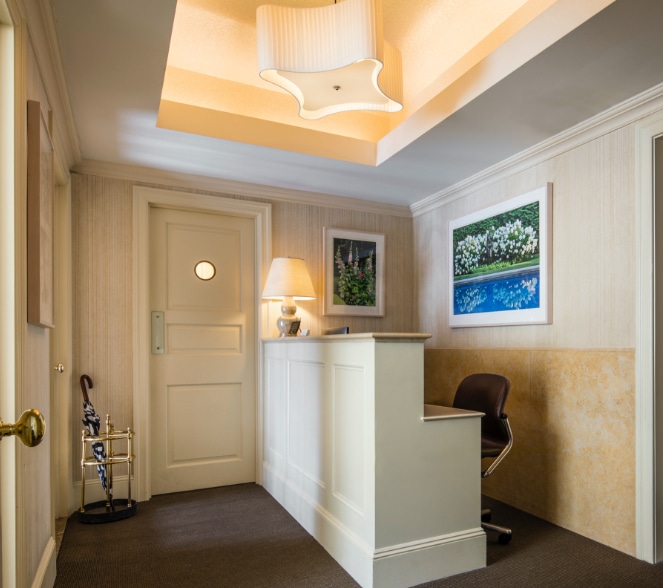The Myths Surrounding Silicone Implants
The popular perception is that silicone breast implants are always a better choice than those filled with saline. The foundation of this belief is twofold: that silicone implants feel better and look better than saline implants. While the former assertion is true in many cases, the latter is not. Both types yield the same aesthetic result (Figure 1). Furthermore, many women believe that breast augmentation with silicone implants is a once in a lifetime event, particularly those who have had them in place for a long time. This is far from true.
implants and the other has silicone. It is not
possible to tell which is which by appearance.
What are the Disadvantages of Silicone Implants?
The viscous nature of silicone gel causes two problems. First, rupture of old silicone implants is a silent event that is not detectable by physical examination alone. Second, unrecognized rupture eventually leads to capsular contracture. Capsular contracture causes hardening of the breasts and shape distortion. This is because the exposed silicone irritates the scar tissue surrounding the implant, causing it to thicken. Due to these issues, it is mandatory to obtain MRI breast scans at least every other year beginning five to seven years after surgery (recommendations vary). These scans are not typically covered by insurance. Moreover, few are diligent about following through as time goes on.
Why are Saline Implants a Good Option?
It has been my observation following decades of experience that saline results are very stable over the long term. They typically look just as good 20 years later as they do soon after surgery. Saline is bio-inert and rarely causes late capsular contracture. Furthermore, implant failure reveals itself on physical examination without the need for MRI scans. These devices are not perfect though, the chief objection being that they wrinkle far more than silicone gel implants (Figure 2). Additionally, early failure after only a few years can occur in 5%, presumably due to an unrecognized manufacturing defect.
on the right when viewed flat, as if the patient is lying down.
also wrinkles. Fortunately these heavy wrinkles on the top of the implants are effectively
concealed by placing the implants under the pectoral muscles.
Silicone or Saline, Which to Choose?
Very thin women with scant breast tissue are the best candidates for silicone implants, as are postpartum women with thin, stretched tissues. Nulliparous women with more ample breast tissue to start with will be equally well served by either type. Older women seeking to minimize the need for future surgery, or those having a simultaneous breast lift and needing only a small implant, are good candidates for saline implants. Given our practice experience that saline implants commonly last twenty years or more, the choice boils down to best breast consistency (silicone) or the desire for maximum implant longevity with no need for MRI scans (saline). Baseline tissue volume and body habitus will otherwise favor one over the other.




